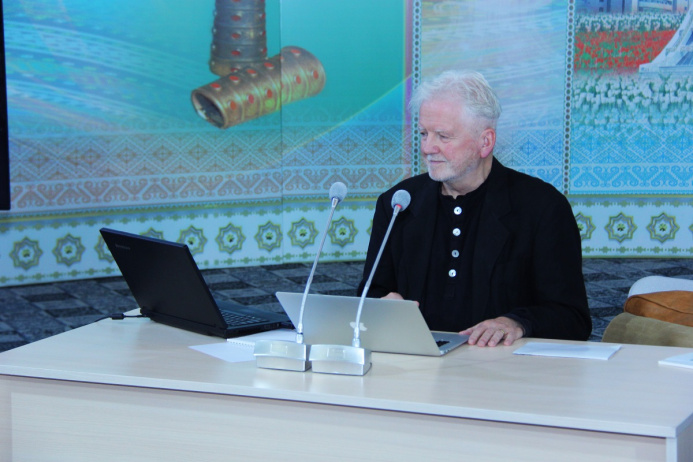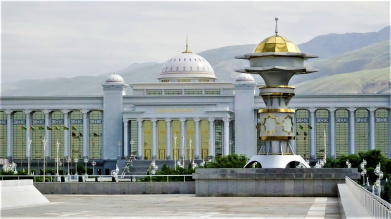A Polish researcher spoke about the eastern roots of European music at a meeting in TNC
15.11.2023 | 14:24 |At the Turkmen National Conservatory named after Maya Kulieva, we held a meeting with the Polish researcher of ancient music Marcin Wladyslaw Szczycinski.
The countertenor singer, expert and promoter of historical singing, founder of the Bornus Consort ensemble, cantor of traditional singing, is a member of the Union of Theater and Film Artists of the City of Warsaw and the Association of Polish Artists and Musicians. For his creative services, Szczycinski was awarded the Per Artem ad Deum medal, awarded by the Pontifical Council for Culture, and the Gloria Artis medal - Honored Artist of Poland.

At the conference, the researcher gave a presentation to teachers and students of the conservatory on the topic “Eastern roots of European music.”
The lecturer revealed the oral traditions of song art, noting that when compared with European art, Eastern music has preserved its musical traditions in greater integrity, therefore the main goal of his research is to identify the traditions of European music in Eastern culture.

On the interactive board, the lecturer demonstrated ancient music manuscripts of European chants and ancient manuscripts of polyphonic music that date back to the early Middle Ages, dating back to 925 and 1254. Being the owner of a very rare voice, Marcin Władysław Szczycinski performed these ancient chants for listeners, and also provided electronic recordings of these chants. According to him, professional music in Poland began to develop in the 9th century, when collections of Gregorian chants appeared.
Shchycinsky said that he visited Turkmenistan for the first time 21 years ago and got acquainted with the traditional music of dutar performers and the art of bakhshi. The scientist noted many common elements in the performance of folk melodies in European musical culture and traditional Turkmen music. Here one can draw parallels between the performance of oriental melodies with the performance of European polyphonic music, where, first of all, common features are revealed in the principles of free movement and development of melodies. The researcher also noted the modern professional composing creativity of Turkmenistan, this is the symphonic music of Nury Halmamedov and Chary Nurymov, their unique style and methods of working with national musical folklore.

Conservatory students performed for the guests and demonstrated Turkmen folk music in solo performances. Thus, Amanmurad Sahetdurdyev, a 2nd year student majoring in “Bakhshi Art” sang folk songs “Yar olmadyn” and “Ozge gerekmez”, Gurbanberdi Saparov, a 1st year student majoring in “Turkmen Music” performed on the gidzhak folk melodies “Aya” menzyar" and "Batyr Karov", Akhmed Shadurdyev, a 2nd year student majoring in "Turkmen music" performed folk pieces for dutar "Alagayshly" and "Satashdym".
At the meeting, guests got acquainted with the exhibition of the Conservatory Museum named after Maya Kulieva, which tells about the work of the famous opera singer, and with the samples of Turkmen national musical instruments presented here. Then, as gifts, the guests were presented with electronic recordings of Turkmen folk songs and melodies, as well as a photo album about folklore expeditions organized by TNC.

The meeting was organized by the Vatican Embassy in Turkmenistan, the Apostolic Nunciature together with the Ministry of Foreign Affairs of Turkmenistan with the assistance of the Ministry of Culture of Turkmenistan.
Agadzhan ACHILOV











